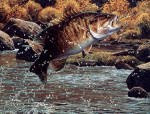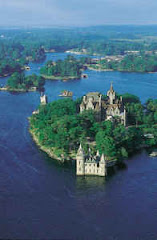American sympathizers attacked Canada 10 times from bases in the United States between December 1837 and December 1838.
The St. Lawrence River had its share of rebel activity in that period: an aborted raid on Gananoque and Kingston in February; the looting and burning of the steamer Sir Robert Peel in May; and, a four-day siege at a windmill near Prescott in November.
The only rebel leader to participate in all three incidents was the legendary Bill Johnston, a long-time smuggler and former Canadian who fought as a river raider for the Americans during the War of 1812.
After Johnston and a small band of men destroyed the Peel, the Thousand Islands became ground zero for a costly bi-national manhunt. Throughout the summer and into the fall of 1838, a combined force from two countries of 500 men and at least four armed steamships, plus smaller boats, concerned themselves entirely with nabbing Johnston. It would be easier to capture morning mist.
No man in Upper Canada wanted Johnston more than Richard Henry Bonnycastle, 45. A brevet major in the Royal Engineers, he arrived in Kingston in 1837 to complete construction of Fort Henry. As a militia lieutenant-colonel, he found himself the de facto fort commandant when the Upper Canada rebellion began. He had succeeded at every task and challenge in his career. The crafty river pirate stood in the way of a perfect record. He focused the full depth of his intellect on netting Johnston.
Bonnycastle and his naval ally, Captain Williams Sandom, had spies in New York State and Upper Canada watching for Johnston. They ordered armed crews into the islands in rowboats to shadow Johnston's daughter and sons as they shipped him supplies. The Johnston siblings proved too clever to inadvertently lead authorities to the pirate patriarch.
The St. Lawrence River had its share of rebel activity in that period: an aborted raid on Gananoque and Kingston in February; the looting and burning of the steamer Sir Robert Peel in May; and, a four-day siege at a windmill near Prescott in November.
The only rebel leader to participate in all three incidents was the legendary Bill Johnston, a long-time smuggler and former Canadian who fought as a river raider for the Americans during the War of 1812.
After Johnston and a small band of men destroyed the Peel, the Thousand Islands became ground zero for a costly bi-national manhunt. Throughout the summer and into the fall of 1838, a combined force from two countries of 500 men and at least four armed steamships, plus smaller boats, concerned themselves entirely with nabbing Johnston. It would be easier to capture morning mist.
No man in Upper Canada wanted Johnston more than Richard Henry Bonnycastle, 45. A brevet major in the Royal Engineers, he arrived in Kingston in 1837 to complete construction of Fort Henry. As a militia lieutenant-colonel, he found himself the de facto fort commandant when the Upper Canada rebellion began. He had succeeded at every task and challenge in his career. The crafty river pirate stood in the way of a perfect record. He focused the full depth of his intellect on netting Johnston.
Bonnycastle and his naval ally, Captain Williams Sandom, had spies in New York State and Upper Canada watching for Johnston. They ordered armed crews into the islands in rowboats to shadow Johnston's daughter and sons as they shipped him supplies. The Johnston siblings proved too clever to inadvertently lead authorities to the pirate patriarch.




